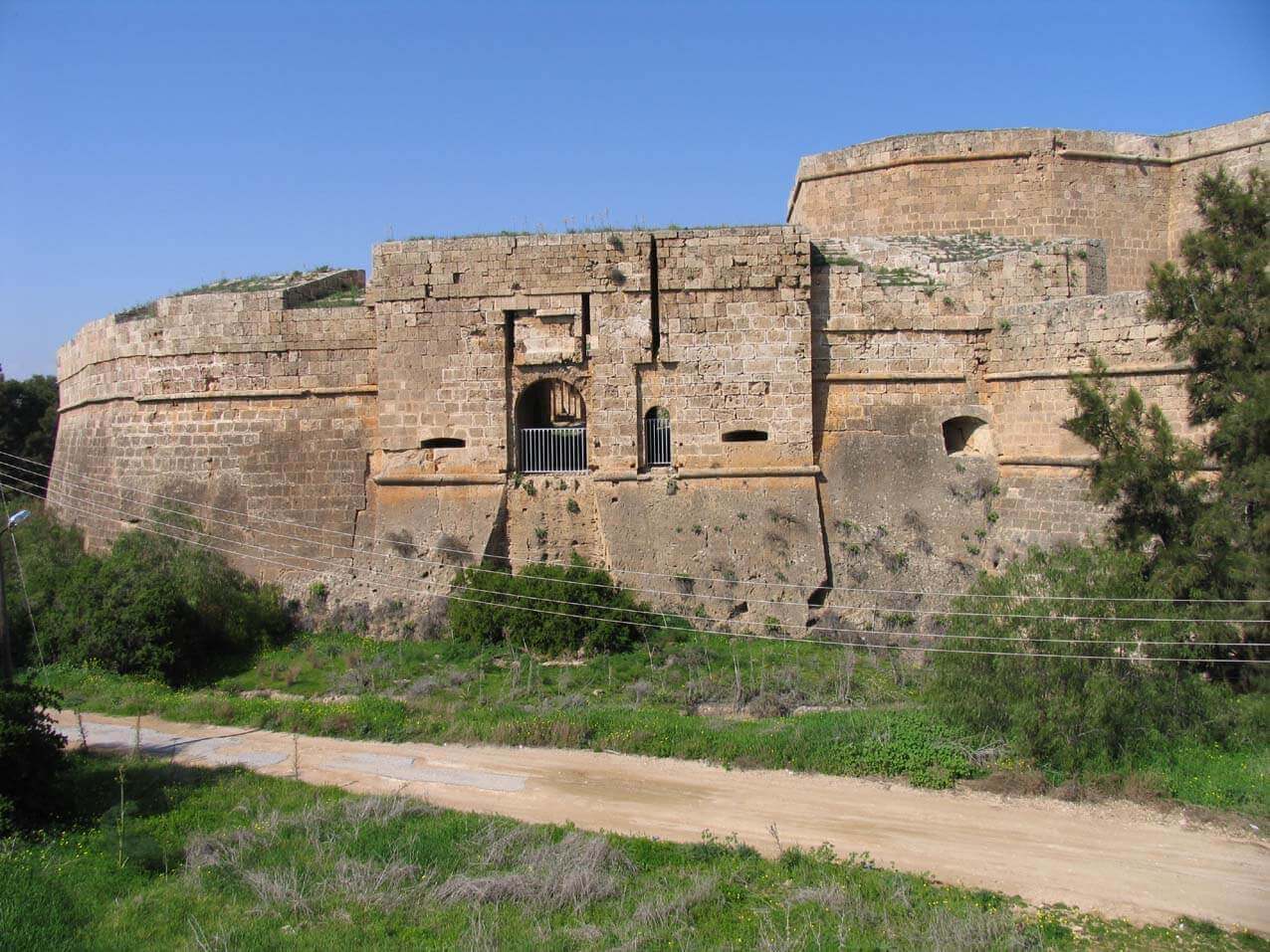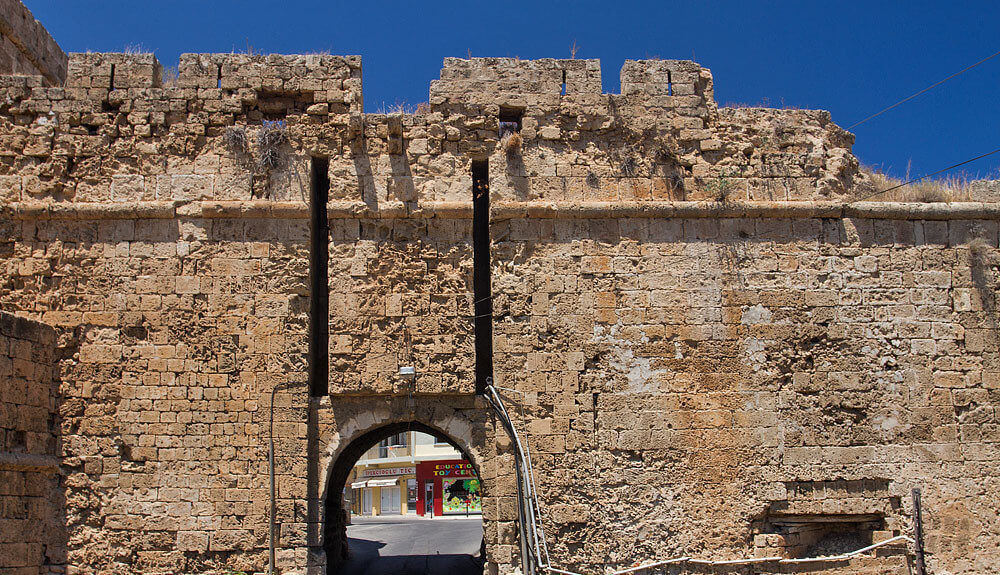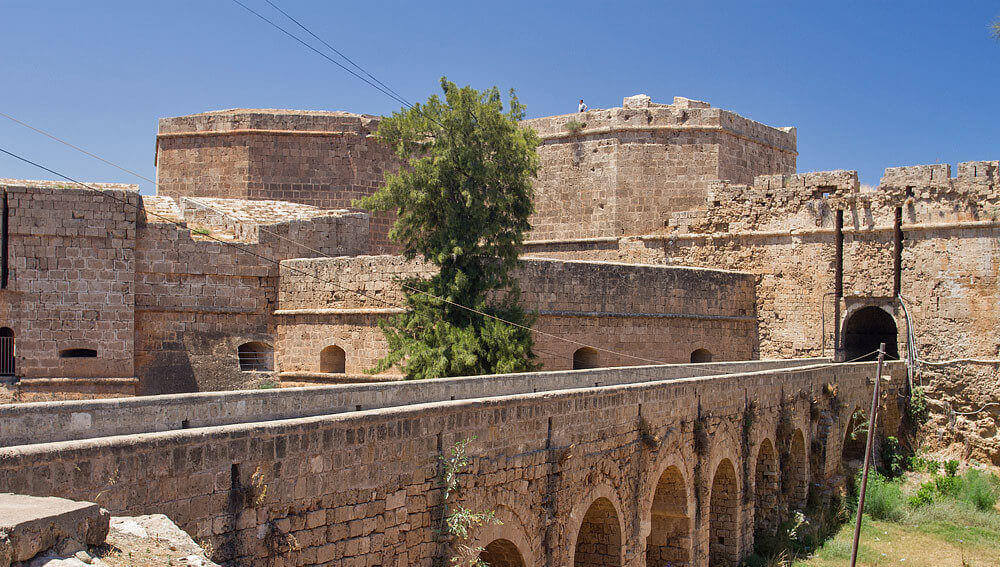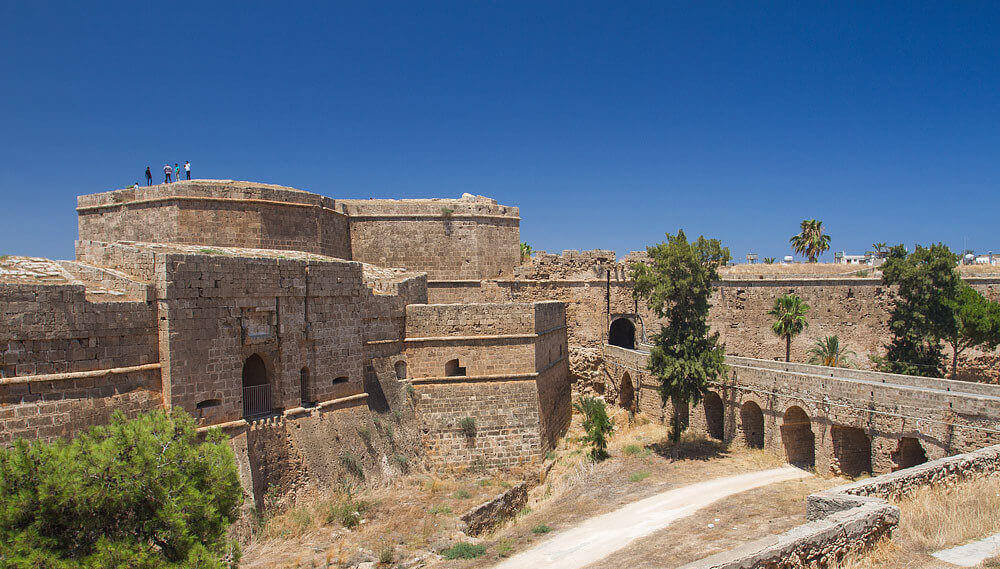Familiarity with the fortress of Famagusta is advisable to start from the history of the city itself - then it will be clear why the fortress appeared in it at all. So, for more than a thousand years, Famagusta, which was a small fishing village, quietly lived its life and did not know any serious troubles. At the end of the 12th century, peace came to an end. Cyprus was captured by the crusaders of Richard the Lionheart, then the island passed into the power of the Templar Order, even later-to King Lusignan. It was he who liked the town of Famagusta, in which it was decided to establish a fort.
The construction of the fortress of Famagusta
The construction of the fort was carried out along the entire perimeter of the ancient city. Sparing no expense in materials and labor, the king built a double wall around the city. Stones in the form of blocks were mainly used for construction. In some places, the landscape made it possible to make "superstructures" on natural rocks, thereby somewhat simplifying the construction of massive walls. by the way, their height reached 15 meters, thickness-5-6, and in some places even 10 meters.
The need to defend the city was caused by the frequent raids of foreigners. Thick walls were built for the reason that the guns of the attackers were improved every time. Famagusta Fort adequately withstood the blows of huge boulders and metal cores.
A moat was dug along the perimeter from the outside of the fortress, which was filled with sea water. The moat served as an additional barrier for opponents and, in fact, turned the fortress into a separate island. Inside the walls of the fortress itself was a long corridor, along which sentries walked and listened all the time. It was a way to determine if the enemy was planning to dig in.
The majestic walls of the fortress were interrupted by no less majestic round towers. in the walls and towers there were loopholes-holes that widened to the inside and narrowed to the outside of the fortress walls. loopholes were used for shooting bows, crossbows and other weapons. also inside the fortress, special lifts were attached to the walls, along which guns and ammunition were raised, including with the help of horses. along the walls in the upper part of the inner side, a special path was arranged, along which the defenders could safely move, while remaining covered from the enemy. the ascent to the walls of the fort was carried out by stone stairs. during its existence, the fortress was repeatedly rebuilt and improved.
The majestic walls of the fortress were interrupted by no less majestic round towers. in the walls and towers there were loopholes-holes that widened to the inside and narrowed to the outside of the fortress walls. loopholes were used for shooting bows, crossbows and other weapons. also inside the fortress, special lifts were attached to the walls, along which guns and ammunition were raised, including with the help of horses. along the walls in the upper part of the inner side, a special path was arranged, along which the defenders could safely move, while remaining covered from the enemy. the ascent to the walls of the fort was carried out by stone stairs. during its existence, the fortress was repeatedly rebuilt and improved.
The city, surrounded by a wall, was led by two gates - sea and land with a drawbridge. Today, tourists enter the sightseeing through other ground gates, which were built in the 18th century.
Violent capture of the fortress of Famagusta
The powerful fortress has repeatedly protected the inhabitants of the city from raids. And it seems that in 1571 the fortress again had every chance to survive. Despite the fact that after an aggressive Turkish raid, the entire island quickly surrendered, Famagusta successfully held the siege for almost 9 months.
Deception prevented a peaceful and honest resolution of the conflict. The Turks offered the commandant of the fortress to surrender without a fight in exchange for the fact that all the inhabitants and soldiers of the fortress would remain alive. The decision to open the gate to the enemy was reckless.
The turks brutally dealt with all the defenders of the fortress, and the commander-in-chief was flayed in front of all the inhabitants of the city. the townspeople were expelled from the fortress, and the turks settled in it. the surviving inhabitants of famagusta did not go far, but founded a quarter just outside the walls of the fortress. Now this quarter is called Varosha.
The powerful fortress has repeatedly protected the inhabitants of the city from raids. And it seems that in 1571 the fortress again had every chance to survive. Despite the fact that after an aggressive Turkish raid, the entire island quickly surrendered, Famagusta successfully held the siege for almost 9 months.
Deception prevented a peaceful and honest resolution of the conflict. The Turks offered the commandant of the fortress to surrender without a fight in exchange for the fact that all the inhabitants and soldiers of the fortress would remain alive. The decision to open the gate to the enemy was reckless.
The turks brutally dealt with all the defenders of the fortress, and the commander-in-chief was flayed in front of all the inhabitants of the city. the townspeople were expelled from the fortress, and the turks settled in it. the surviving inhabitants of famagusta did not go far, but founded a quarter just outside the walls of the fortress. now this quarter is called Varosha.
Famagusta fortress is a must-visit destination. even today, the well-preserved walls of the fortress look impregnable and powerful. sightseeing can easily take a whole day. it has its own atmosphere, traces of old battles are visible, and in the inner part of the fortress, the tourist will get acquainted with a number of historical, architectural and religious attractions.
Famagusta fortress is a must-visit destination. even today, the well-preserved walls of the fortress look impregnable and powerful. sightseeing can easily take a whole day. it has its own atmosphere, traces of old battles are visible, and in the inner part of the fortress, the tourist will get acquainted with a number of historical, architectural and religious attractions.












